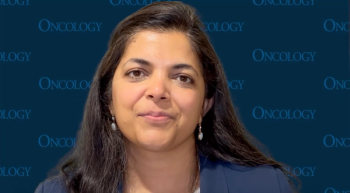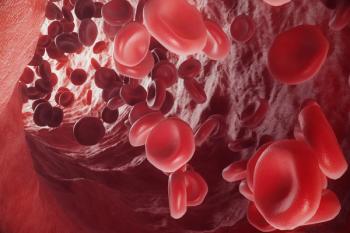
Oncology NEWS International
- Oncology NEWS International Vol 9 No 11
- Volume 9
- Issue 11
Rituximab More Effective in B-Cell NHL Than in MCL
NEW ORLEANS-Rituximab (Rituxan) is more effective in indolent B-cell non-Hodgkin’s Lymphoma (NHL) than in mantle cell lymphoma (MCL), according to a study evaluating factors affecting toxicity, response, and time to progression presented at the 36th Annual Meeting of the American Society of Clinical Oncology (ASCO).
NEW ORLEANSRituximab (Rituxan) is more effective in indolent B-cell non-Hodgkins Lymphoma (NHL) than in mantle cell lymphoma (MCL), according to a study evaluating factors affecting toxicity, response, and time to progression presented at the 36th Annual Meeting of the American Society of Clinical Oncology (ASCO).
Ninety patients with CD20-positive B-cell NHL (group 1) or mantle cell lymphoma (group 2) were treated with rituximab at 375 mg/m² for 4 weekly infusions. To prevent adverse drug reactions, patients were premedicated with ibuprofen (200 mg) and d-chlorphen-iramine maleate (2 mg) 30 minutes before each infusion.
Included patients had relapsed or refractory B-cell NHL with measurable lesions (2 cm or larger if one lesion), age between 15 and 74 years, ECOG performance status (PS) 0 to 2, and adequate organ function, said lead investigator Michinori Ogura, MD, of the IDEC-C2B8 Study Group, Japan.
Follicular lymphoma accounted for 59 patients and mantle cell lymphoma for 17. Excluded were patients with positive human antichimeric antibody (HACA) with a history of mouse monoclonal antibody treatment; B cells in peripheral blood greater than 5,000/mL; CNS involvement; or positive HBs antigen, HBV antibody, or HIV antibody.
Fifteen patients were judged ineligible due to pathology or positive HBV serology, leaving 61 eligible in group 1 and 13 in group 2. Plasma rituximab concentrations were assayed by ELISA.
Study Results
Dr. Ogura said that overall response rates in indolent B-NHL and mantle cell lymphoma were 61% (37/61) and 46% (6/13), respectively. The median time to progression was 245 days for NHL (range, 19 to 539 days) and 111 days for mantle cell lymphoma (range, 20 to 266 days).
Response rates in indolent B-cell NHL were affected by performance status (PS 0 vs 1-2, P = .011); B symptoms (+ vs -, P = .012); and number of prior chemotherapies (1 vs 2 vs 3, P = .007).
Dr. Ogura stated that in a subgroup of 26 patients for whom rituximab concentrations were available, there was a significant increase in time to progression for patients showing high plasma concentration both at day 14 (more than 70 mg/mL) and at 3 months (more than 10 mg/mL), compared with those having lower concentrations (P = .0019).
Plasma concentrations at limited time points may become a predictive surrogate marker for prediction of time to progression, he said.
By univariate analysis, hematologic toxicities (grade 3-4) were more frequent in female than in male patients (P = .028). Leukopenia and thrombocytopenia were more frequent in patients with high LDH (serum lactic dehydrogenase) (P = .020 and P = .041, respectively).
Nonhematologic toxicities (grade 2-3) were more frequent in patients with high LDH, more than two extranodal sites, or bone marrow involvement, Dr. Ogura said. He pointed out that toxicities were seen mostly during the first infusion.
Articles in this issue
about 25 years ago
Joe & Ali Torre Lead ‘Two Against One’ Prostate Cancer Campaignabout 25 years ago
Efforts to Reduce Tobacco Deaths May Fail in the Short Termabout 25 years ago
Data Published for First-Line Irinotecanabout 25 years ago
Manufacturing Capability a Factor in Success of New Biologicsabout 25 years ago
Report Finds States Not Using Tobacco Funds for Preventionabout 25 years ago
NCI Intramural Program Challenged to ‘Reinvent Itself’about 25 years ago
Surgery Supported for Recurring Colorectal Cancerabout 25 years ago
Breast Cancer Stamp Funds $6.7 Million in 2-Year NCI Grantsabout 25 years ago
Human Side of Cancer Offers Insights on Coping With the DiseaseNewsletter
Stay up to date on recent advances in the multidisciplinary approach to cancer.
















































































